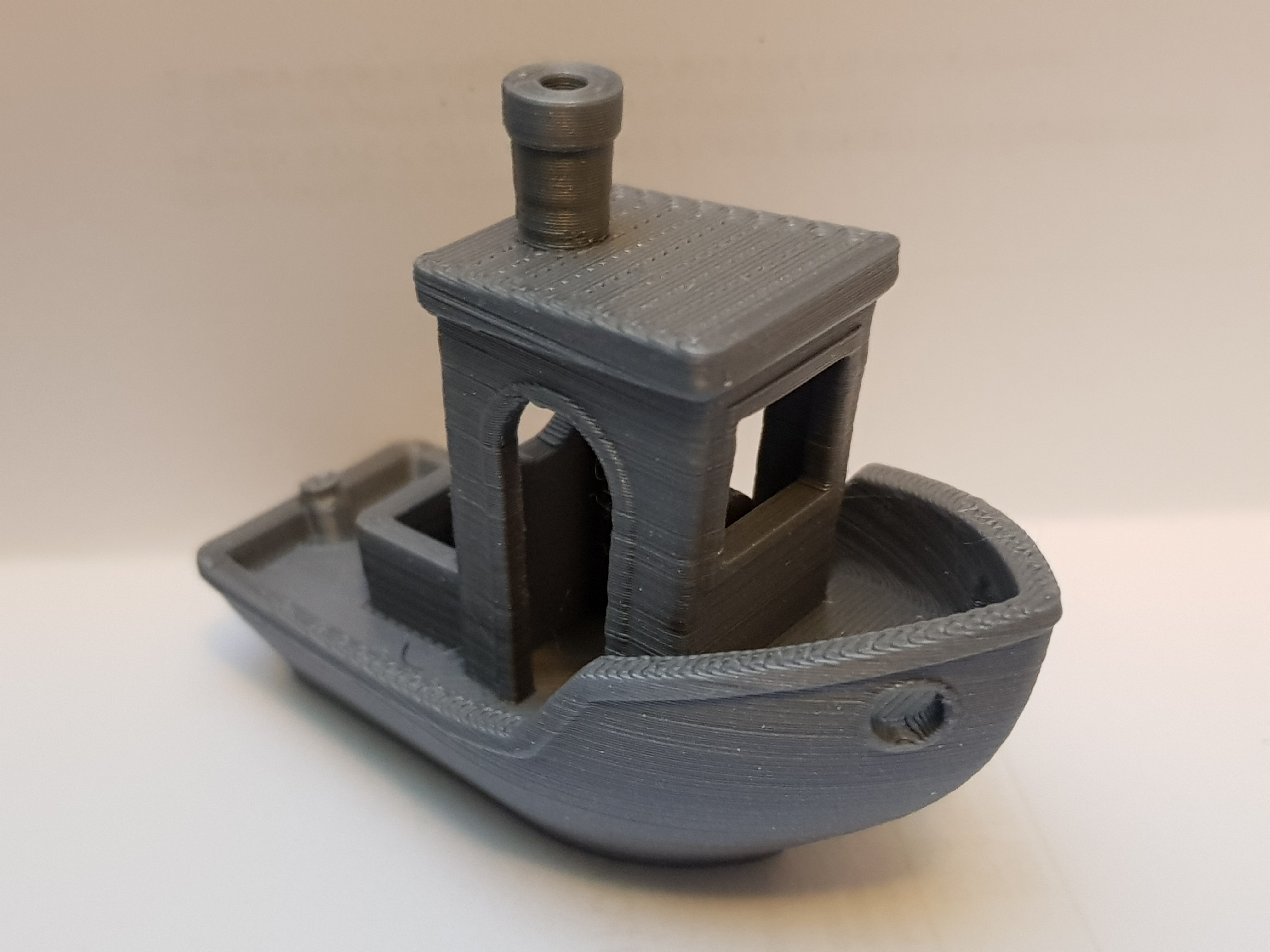Interesting. Thanks for reporting.
What acceleration did you print this at? What was the retract setting and retraction speed (if any) for the print? When was the last time you calibrated pressure advance using the "square tuning tower"? If you still have the tuning tower available can you post pictures of that? Do you know the code revision you were at when you printed the benchy from a couple of weeks ago?
The most obvious concern would be something due to the merge of PR #2275 a few days ago. However, a presure_advance=0.85 is pretty high and it's also possible the extruder is reacting poorly with an accel of 3000 (the default for your config).
-Kevin
 Same filament is used for this as the previous pictures off the same spool. That "scar" on the right is also on one more side, and there's some downright weirdness happening in the middle (not pictured was the removed strings from the front left corner to the front of the right inner gap), but I put that down to some Cura settings I was playing with at the time. It's safe to say that even a value of 1.0 isn't perfect, but some corner inconsistency starts creeping in too far above 0.8.
Same filament is used for this as the previous pictures off the same spool. That "scar" on the right is also on one more side, and there's some downright weirdness happening in the middle (not pictured was the removed strings from the front left corner to the front of the right inner gap), but I put that down to some Cura settings I was playing with at the time. It's safe to say that even a value of 1.0 isn't perfect, but some corner inconsistency starts creeping in too far above 0.8. New print on the right is definitely better than the original on the left, but still not quite as good as the no-PA one in the middle. So this could be an avenue worth exploring further (maybe 225°c?)
New print on the right is definitely better than the original on the left, but still not quite as good as the no-PA one in the middle. So this could be an avenue worth exploring further (maybe 225°c?)
 2,000mm/s/s on the left, 3,000mm/s/s on the right. Aside from a slight change in the vertical rippling (it's a cantilever gantry on POM rollers w/ bowden tube, so I expect that) they're basically identical. Which means it's not an acceleration incompatibility.
2,000mm/s/s on the left, 3,000mm/s/s on the right. Aside from a slight change in the vertical rippling (it's a cantilever gantry on POM rollers w/ bowden tube, so I expect that) they're basically identical. Which means it's not an acceleration incompatibility.
klippy.log
I'm including the log merely as a formality, as I don't expect it will help. However, I'm also including pictures which... well, they may not help either. Allow me to explain.
Two days ago now, I ran off a new Benchy to test my latest profile modifications. I'm not a huge fan of the model but it's popular enough that comparing results (and issues) isn't usually a hassle. But I found that while most of mine printed near perfectly, the pillars on the cabin (and a few other small details) were significantly under-extruded - to the point where I accidentally ripped off the top of the cabin. I switched out my extruder and tried again, only to find the same basic problems (albeit slightly lessened). So I printed off the model starting from 18mm up, compared the more-detailed front part of the cabin, and, well...
Figuring there was some problem with Pressure Advance in combination with short extrusions and multiple retractions on the same layer, I created a custom model with the same basic features to use as a test tower for tuning. This gave the following result... Seen as how this now worked, I figured a setting had inadvertently become "stuck" or otherwise corrupted, so I printed off the earlier cabin piece again.
Seen as how this now worked, I figured a setting had inadvertently become "stuck" or otherwise corrupted, so I printed off the earlier cabin piece again.

 Same deal - PA 0.82 on the left, PA 0.0 on the right. PA definitely gave a better showing this time (especially from the front), but something is clearly off.
Same deal - PA 0.82 on the left, PA 0.0 on the right. PA definitely gave a better showing this time (especially from the front), but something is clearly off.
All of these cabin parts were printed on the same printer, off the same roll of filament, using the same G-Code made by Cura. The only thing that was changed was the PA setting. This issue also only appears to show up on layers with short extrusion/retraction combinations but doesn't apply to the whole layer - the hull of an affected print is absolutely fine, even up above where the cabin starts failing, until it reaches the section with the anchor holes in it.
For reference, here's a complete Benchy I ran off a couple weeks ago. It does have some minor surface problems but I don't feel they're significant enough to represent a problem. Importantly, though, the top of the cabin is firmly attached. The steering wheel is also perfectly formed (and near-impossible to photograph with my available equipment).